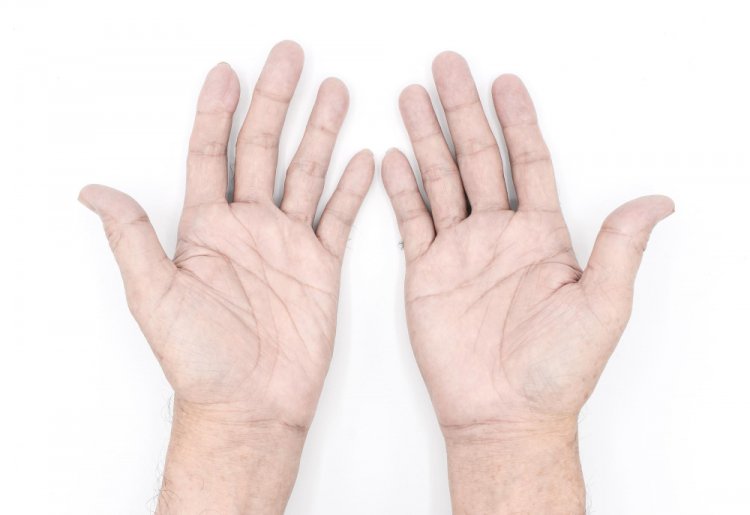Cold Hands, Warm Solutions: Managing Raynaud's with Ease
Raynaud's Phenomenon, also known as Raynaud's Disease or Raynaud's Syndrome, is a condition that affects blood flow to certain parts of the body, typically the fingers and toes, in response to cold temperatures or stress. This condition causes the small blood vessels in these extremities to narrow, leading to reduced blood flow and temporary numbness, tingling, or color changes in the affected areas. While Raynaud's Phenomenon can be uncomfortable and inconvenient, it is generally not life-threatening. However, it can significantly impact a person's quality of life and may require management to alleviate symptoms and prevent complications.

Causes
The exact cause of Raynaud's Phenomenon is not fully understood, but it is believed to involve an overreaction of the blood vessels to cold temperatures or emotional stress. When exposed to cold or stress, the body's sympathetic nervous system responds by constricting blood vessels to conserve heat and maintain core body temperature. In individuals with Raynaud's Phenomenon, this response is exaggerated, leading to excessive narrowing of the blood vessels and inadequate blood flow to the affected areas.
Raynaud's Phenomenon can be categorized into two main types:
-
Primary Raynaud's Phenomenon: Also known as Raynaud's Disease, this type occurs without an underlying medical condition. It is more common and tends to be less severe.
-
Secondary Raynaud's Phenomenon: This type is associated with an underlying medical condition or certain factors, such as autoimmune diseases like scleroderma, lupus, or rheumatoid arthritis, vascular diseases, smoking, certain medications, or exposure to vibrating tools or machinery.
Symptoms
The primary symptom of Raynaud's Phenomenon is a sequence of color changes in the affected extremities, typically the fingers and toes. These color changes occur in response to triggers such as cold temperatures or emotional stress and typically progress through three stages:
-
Pallor (white or pale skin): The affected area turns white or becomes pale as blood flow to the area decreases due to vasoconstriction of the blood vessels.
-
Cyanosis (blue discoloration): As blood flow is further restricted, the affected area may turn blue or purple due to lack of oxygen.
-
Rubor (redness): Once blood flow returns to normal, the affected area may turn red and feel warm as the blood vessels dilate to increase circulation.
Other symptoms of Raynaud's Phenomenon may include numbness, tingling, or a prickly sensation in the fingers or toes. In severe cases, ulcers or sores may develop on the affected digits due to reduced blood flow and tissue damage.
Diagnosis
Diagnosing Raynaud's Phenomenon typically involves a thorough medical history and physical examination by a healthcare professional. They may also conduct tests to rule out underlying conditions or secondary causes of the symptoms. These tests may include blood tests, nailfold capillaroscopy (examination of the tiny blood vessels under the nails), and thermal imaging to assess blood flow and temperature changes in the affected areas.
Management and Treatment
While there is no cure for Raynaud's Phenomenon, various strategies can help manage symptoms and reduce the frequency and severity of attacks. These may include:
-
Avoiding Triggers: Identifying and avoiding triggers such as cold temperatures, stress, and smoking can help reduce the frequency of Raynaud's attacks.
-
Keeping Warm: Dressing warmly and using hand and foot warmers can help maintain body temperature and prevent blood vessels from constricting excessively.
-
Stress Management: Practicing relaxation techniques such as deep breathing, meditation, or yoga can help reduce stress levels and minimize the risk of Raynaud's attacks triggered by emotional stress.
-
Medications: In some cases, medications such as calcium channel blockers, alpha-blockers, or vasodilators may be prescribed to help relax blood vessels and improve blood flow to the affected areas.
-
Biofeedback Therapy: Biofeedback techniques may help some individuals gain better control over their body's response to cold temperatures or stress, reducing the frequency and severity of Raynaud's attacks.
-
Protecting the Skin: Keeping the skin well-moisturized and protected from injury can help prevent complications such as ulcers or sores in individuals with severe Raynaud's Phenomenon.
In cases of secondary Raynaud's Phenomenon associated with underlying medical conditions, managing the underlying condition is essential for controlling symptoms and preventing complications.
In conclusion, Raynaud's Phenomenon is a relatively common condition characterized by episodes of reduced blood flow to the fingers and toes, resulting in color changes, numbness, and tingling. While it can be uncomfortable and inconvenient, especially in cold climates, most people with Raynaud's Phenomenon can effectively manage their symptoms with lifestyle changes and, in some cases, medication. By understanding the triggers and adopting appropriate management strategies, individuals with Raynaud's Phenomenon can lead fulfilling lives while minimizing the impact of this condition on their daily activities.
#RaynaudsPhenomenon #ColdHands #Vasoconstriction #BloodCirculation #DigitalArteries #HandNumbness #ToeDiscoloration #AutoimmuneDisorders #RaynaudsDisease #RaynaudsSyndrome #ManagingRaynauds #HealthTips #Wellness #ChronicIllness #ColdWeather #StressManagement #Medication #LifestyleChanges #Healthcare #Awareness #Support #Numbness #Tingling #ChronicCondition #MedicalAdvice #SelfCare #HealthAndWellness
Disclaimer:
The information provided in this article is for educational purposes only and should not be considered medical advice. If you have any health concerns or are experiencing symptoms, it is important to consult with a healthcare professional, such as a doctor or clinic, for proper diagnosis and treatment. Always seek the advice of your doctor or other qualified health provider with any questions you may have regarding a medical condition. Do not disregard professional medical advice or delay in seeking it because of something you have read in this article.
What's Your Reaction?





















